- Home
- Stephen Baxter
Xeelee: An Omnibus: Raft, Timelike Infinity, Flux, Ring
Xeelee: An Omnibus: Raft, Timelike Infinity, Flux, Ring Read online
Contents
Title Page
Copyright Page
Dedication
Introduction
RAFT
Chapter 1
Chapter 2
Chapter 3
Chapter 4
Chapter 5
Chapter 6
Chapter 7
Chapter 8
Chapter 9
Chapter 10
Chapter 11
Chapter 12
Chapter 13
Chapter 14
Chapter 15
Chapter 16
TIMELIKE INFINITY
Chapter 1
Chapter 2
Chapter 3
Chapter 4
Chapter 5
Chapter 6
Chapter 7
Chapter 8
Chapter 9
Chapter 10
Chapter 11
Chapter 12
Chapter 13
Chapter 14
Chapter 15
Chapter 16
FLUX
Chapter 1
Chapter 2
Chapter 3
Chapter 4
Chapter 5
Chapter 6
Chapter 7
Chapter 8
Chapter 9
Chapter 10
Chapter 11
Chapter 12
Chapter 13
Chapter 14
Chapter 15
Chapter 16
Chapter 17
Chapter 18
Chapter 19
Chapter 20
Chapter 21
Chapter 22
Chapter 23
Chapter 24
Chapter 25
Chapter 26
Chapter 27
Chapter 28
Chapter 29
RING
Chapter 1
Chapter 2
Chapter 3
Chapter 4
Chapter 5
Chapter 6
Chapter 7
Chapter 8
Chapter 9
Chapter 10
Chapter 11
Chapter 12
Chapter 13
Chapter 14
Chapter 15
Chapter 16
Chapter 17
Chapter 18
Chapter 19
Chapter 20
Chapter 21
Chapter 22
Chapter 23
Chapter 24
Chapter 25
Chapter 26
Chapter 27
Chapter 28
Chapter 29
Chapter 30
Chapter 31
Chapter 32
Chapter 33
Chapter 34
Chapter 35
TIMELINE
ALSO BY STEPHEN BAXTER FROM GOLLANCZ
NON-FICTION
Deep Future
FICTION
Mammoth
Longtusk
Icebones
Behemoth
Reality Dust
Evolution
Flood Ark
THE WEB
Gulliverzone
Webcrash
DESTINY’S CHILDREN
Coalescent
Exultant
Transcendent
Resplendent
A TIME ODYSSEY (with Arthur C. Clarke)
Time’s Eye
Sunstorm
Firstborn
TIME’S TAPESTRY
Emperor
Conqueror
Navigator
Weaver
Xeelee: An Omnibus
STEPHEN BAXTER
Orion
www.orionbooks.co.uk
A Gollancz eBook
Copyright © Stephen Baxter 2010
Introduction © Paul McAuley 2009
Raft © Stephen Baxter 1991
Timelike Infinity © Stephen Baxter 1992
Flux © Stephen Baxter 1993
Ring © Stephen Baxter 1994
All rights reserved.
The right of Stephen Baxter to be identified as the author of this work, and the right of Paul McAuley to be identified as the author of the introduction, has been asserted by them in accordance with the
Copyright, Designs and Patents Act 1988.
This omnibus first published in Great Britain in 2010 by
Gollancz
The Orion Publishing Group Ltd
Orion House
5 Upper Saint Martin’s Lane
London, WC2H 9EA
An Hachette UK Company
This eBook first published in 2010 by Gollancz.
A CIP catalogue record for this book is available from the British Library.
eISBN : 978 0 5750 9044 6
This eBook produced by Jouve, France
No part of this publication may be reproduced, stored in a retrieval system or transmitted in any form or by any means, without the prior permission in writing of the publisher, nor to be otherwise circulated in any form of binding or cover other than that in which it is published without a similar condition, including this condition, being imposed on the subsequent purchaser.
www.stephen-baxter.com
www.orionbooks.co.uk
To my wife, Sandra
INTRODUCTION
While many science fiction authors have written serial stories or novels that share the same backdrop and characters, only a handful have constructed meticulously imagined, chronologically consistent future histories that encompass substantial vistas of time and space, and of those future histories, few are as ambitious as Stephen Baxter’s Xeelee Sequence.
The first true future history was created by Olaf Stapledon in his novels Last and First Men, Last Men in London, and The Star Maker, starting in the teeming metropolis at the heart of the British Empire at the beginning of the twentieth century, and accelerating through aeons and galaxies to a final encounter with the being at the heart of creation. It’s a masterpiece, but a chilly one, its story of the evolution of symbiotic cosmic consciousness visionary but remote from ordinary human concerns. A few years later, in the pages of Astounding Science Fiction magazine, Robert A. Heinlein charted a smaller scale but no less ambitious future history that, beginning the day after tomorrow, conscientiously chronicled mankind’s climb from the cradle of the Earth to the near stars. The long evolutionary and cosmological perspectives of Stapledon (and H.G. Wells) have been absorbed and developed by many British writers, most notably Arthur C. Clarke, and Greg Bear and Robert Reed have given them an American slant, but Heinlein’s model has provided the blueprint for most subsequent science fictional future histories because it easily accommodates the kind of genre-friendly stories of enterprise and boldness that are dwarfed to irrelevance by Stapledon’s cosmological Agape. The future histories of Poul Anderson, James Blish, C.J. Cherryh, and Larry Niven, amongst others, derive much of their structures and tropes from Heinlein’s pioneering framework. Baxter’s Xeelee Sequence owes something to Heinlein too, with its hard SF extrapolations and vigorous straight-from-the-heart-of-genre story of humanity’s ascension to the centre of the galactic stage, but it skilfully blends those core SF tropes with cosmological perspectives rivalled only by those of Olaf Stapledon (like Stapledon, Baxter was born in Liverpool) to create something new and different: an ambitious and ferociously detailed future history whose span is no less than that of the entire universe, from the Big Bang twenty billion years ago, through some ten million years of human history, to the long, slow dying of the light that dwindles away into timelike infinity.
Stephen Baxter has also published the Victorian
alternate history Anti-Ice, and The Time Ships, a very fine hard SF sequel to H.G. Wells’s The Time Machine. He’s written a trilogy of novels based on extrapolations of NASA plans and technology; a series about a species of intelligent mammoth; an alternate near-future trilogy revolving around a space entrepreneur; a stand-alone novel, Evolution , that chronicles the story of the development of the human species from dinosaur-dodging burrowers to simplified far-future descendants; and an ongoing series of apocalyptic novels in which Earth is flooded with water kilometres deep. He’s also published novels in collaboration with Arthur C. Clarke, a biography of the pioneering Scottish geologist James Hutton, and a series of essays about the future. The list is by no means comprehensive. Restless, energetic, and ambitious, he is fast becoming the contemporary default voice of British SF, and the novels and stories of the Xeelee Sequence constitute his masterwork.
The universe of the Xeelee Sequence teems with life: life, and the evolution of self-aware consciousness, are as fundamental as the Planck constant, the speed of light, the strength of the electromagnetic force, or the Newtonian constant of gravitation. Life arises wherever it can and invariably gives rise to Mind; Mind seeks to spread everywhere and to survive for as long as possible. And by everywhere, I mean everywhere: an entire civilisation evolves and seeks refuge in the yoctoseconds after the Big Bang before symmetry is broken and the laws of physics crystallise; other strange and wonderful empires rise and fall before the quagma froth cools enough to allow creation of baryonic and dark matter, and the beginning of a great war between the Xeelee, powerful champions of life based on ordinary atoms and electrons, and the patient and inscrutable dark matter photino birds. Twenty billion years pass before the war between the Xeelee and the photino birds intersects with human history, and humans painstakingly claw their way up from the status of lowly pawns in the hands of enigmatic and casually cruel alien species to great players on the universal stage.
Of that very first species of intelligent being, the monads, Baxter remarks ‘[they] cared nothing for humans, of course, or for quagmites, or Xeelee, or photino birds, or any of the rest of the universe’s menagerie at this or any other age. But they like their universes to have story; and it was living things that generated the most interesting sagas.’ It could stand as a credo for the entire Xeelee sequence. Baxter doesn’t shrink from tackling the dismayingly inhuman implications of vast abysses of past or future time, but the universality of life introduces perspective, motion and plot into every part of his Stapledonian cosmological framework. It’s great, heady, mind-bending stuff, meticulously mapped onto cutting edge speculations about the birth pangs of the universe and the ultimate fate of all known time and space, constantly enlivened and driven forward by the narratives that its vast range of life generates.
Baxter introduced the Xeelee Sequence in 1987 with his first published short story, ‘The Xeelee Flower’, and explored its entire timeline in two of the novels collected here, Timelike Infinity and Ring, and more than twenty short stories that were later linked and expanded into the novel Vacuum Diagrams. The other novels in this omnibus, Raft and Flux, are self-contained narratives islanded within the framework of the future history. Raft describes a civilisation founded by shipwrecked spacefarers who stumbled into an alternate universe where the gravitational constant is stronger; Flux is the story of microscopic inhabitants of a neutron star who discover that they are part of a grand but flawed scheme to attack the Xeelee’s most ambitious project. A timeline at the end of this volume sets these works in their chronological context.
These early works fully embody Baxter’s virtues: a swift narrative pace; transparent, uncluttered prose; vivid characters defined by action rather than introspection; and above all, accomplished and imaginative exploration, expansion and reworking of SF’s core themes. His characters contest for living space with a panoply of bizarre aliens in a galaxy crammed with ancient wonders and secret histories; his stories reinvent the baroque excesses of space opera and brace them with imaginative exploration of ideas from stellar zoology, cosmology, quantum theory, exotic mathematics, and much else. Narratives froth with moments of shock and awe, and those sudden reversals of scale that induce the metaphysical dizziness sometimes called sense of wonder. Sentences stride confidently across centuries; paragraphs encompass millennia. Individual voices carry the story forwards, but the story is always bigger than the individuals who are caught up in it. And these voices often have a distinctively British accent. Baxter’s sympathies more often lie with chippy but doggedly competent scientists, engineers, and common soldiers than officers, self-made billionaires, or politicians of any stripe; there are overt references to Brunel and echoes of the history and equipage of the British Empire; and above all, his narratives are infused with the elegiac tone characteristic of British SF. While there’s a constant sense of the indefatigable endurance of human spirit characteristic of genre narrative, it isn’t the can-do optimism and frontier heroism of much American SF, but a calm and sober perspective that wryly acknowledges its small but significant place in the cosmological drama. In the long run, as Baxter’s most enduring character, Michael Poole, discovers, time triumphs over all.
If you’ve read later novels and short stories in the Xeelee Sequence, you’ll find that these early novels will deepen and broaden your understanding of its vast future history. Newcomers might want to read the stories collected in Vacuum Diagrams first: they provide a fine overview of the scope of this grandest of space operas. Okay. It’s time to put away the programme.
Overture.
Curtain.
Lights . . .
Paul McAuley
London, May, 2009
RAFT
1
It was when the foundry imploded that Rees’s curiosity about his world became unbearable. The shift started normally enough with a thump on his cabin wall from the fist of Sheen, his shift supervisor. Groggily, Rees pulled himself from his sleeping net and moved slowly about the jumbled cabin, grinding through his wake-up routines.
The water from the rusty spigot emerged reluctantly in the microgee conditions. The liquid was sour and cloudy. He forced down a few mouthfuls and splashed his face and hair. He wondered with a shudder how many human bodies this water had passed through since its first collection from a passing cloud; it had been dozens of shifts since the last supply tree from the Raft had called with fresh provisions, and the Belt’s antique recycling system was showing its deficiencies.
He pulled on a stained, one-piece coverall. The garment was getting too short. At fifteen thousand shifts old he was dark, slim - and tall enough already and still growing, he thought gloomily. This observation made him think with a stab of sadness of his parents; it was just the sort of remark they might have made. His father, who had not long survived his mother, had died a few hundred shifts ago of circulatory problems and exhaustion. Suspended by one hand from the door frame Rees surveyed the little iron-walled cabin, recalling how cluttered it had seemed when he’d shared it with his parents.
He pushed such thoughts away and wriggled through the narrow door frame.
He blinked for a few seconds, dazzled by the shifting starlight . . . and hesitated. There was a faint scent on the air. A richness, like meat-sim. Something burning?
His cabin was connected to his neighbour’s by a few yards of fraying rope and by lengths of rusty piping; he pulled himself a few feet along the rope and hung there, eyes raking the world around him for the source of the jarring scent.
The air of the Nebula was, as always, stained blood-red. A corner of his mind tried to measure that redness - was it deeper than last shift? - while his eyes flicked around the objects scattered through the Nebula above and below him. The clouds were like handfuls of greyish cloth sprinkled through miles of air. Stars fell among and through the clouds in a slow, endless rain that tumbled down to the Core. The light of the mile-wide spheres cast shifting shadows over the clouds, the scattered trees, the huge blurs that might be wh
ales. Here and there he saw a tiny flash that marked the end of a star’s brief existence.
How many stars were there?
As a child Rees had hovered among the cables, eyes wide, counting up to the limits of his knowledge and patience. Now he suspected that the stars were without number, that there were more stars than hairs on his head . . . or thoughts in his mind, or words on his tongue. He raised his head and scoured a sky that was filled with stars. It was as if he were suspended in a great cloud of light; the star-spheres receded with distance into points of light, so that the sky itself was a curtain glowing red- yellow.
The burning scent called to him again, seeping through the thin air. He wrapped his toes in the cabin cable and released his hands; he let the spin of the Belt straighten his spine, and from this new viewpoint surveyed his home.
The Belt was a circle about eight hundred yards wide, a chain of battered dwellings and work places connected by ropes and tubes. At the centre of the Belt was the mine itself, a cooled- down star kernel fifty yards wide; lifting cables dangled from the Belt to the surface of the star kernel, scraping across the rusty meniscus at a few feet per second.
Here and there, fixed to the walls and roofs of the Belt, were the massive, white-metal mouths of jets; every few minutes a puff of steam emerged from one of those throats and the Belt tugged imperceptibly faster at his heels, shaking off the slowing effects of air friction. He studied the ragged rim of the nearest jet; it was fixed to his neighbour’s roof and showed signs of hasty cutting and welding. As usual his attention drifted off into random speculation. What vessel, or other device, had that jet come from? Who were the men who had cut it away? And why had they come here . . . ?
Again the whiff of fire. He shook his head, trying to concentrate.
It was shift-change time, of course, and there were little knots of activity around most of the cabins in the Belt as workers, grimy and tired, made for their sleep nets - and, a quarter of the Belt’s circumference from him, a haze of smoke hovered around the foundry. He saw men dive again and again into the greyish fog. When they re-emerged they tugged limp, blackened forms.

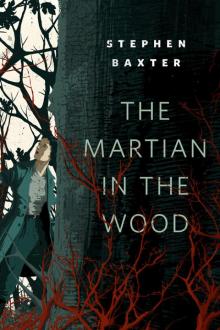 The Martian in the Wood
The Martian in the Wood THE H-BOMB GIRL
THE H-BOMB GIRL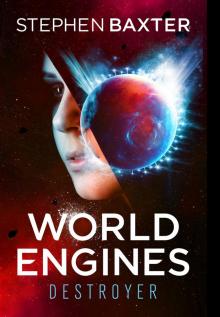 World Engine
World Engine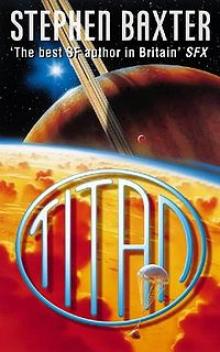 Titan n-2
Titan n-2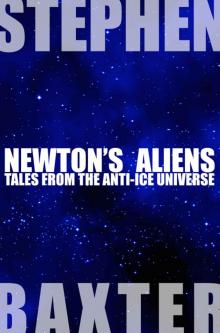 Newton's Aliens: Tales From the Anti-Ice Universe
Newton's Aliens: Tales From the Anti-Ice Universe Exultant
Exultant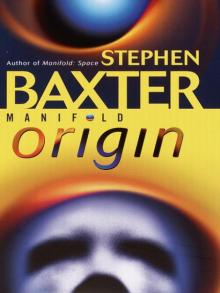 Manifold: Origin
Manifold: Origin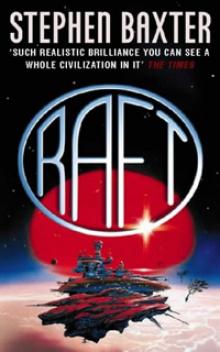 Raft xs-1
Raft xs-1 Bronze Summer n-2
Bronze Summer n-2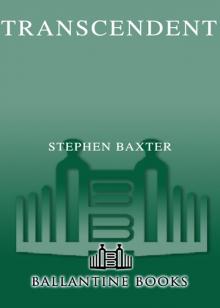 Transcendent
Transcendent Stone Spring
Stone Spring Coalescent
Coalescent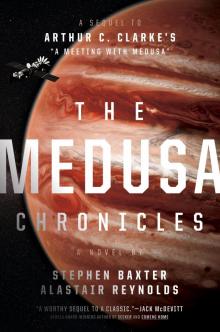 The Medusa Chronicles
The Medusa Chronicles Origin m-3
Origin m-3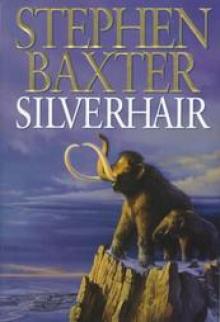 Silverhair tm-1
Silverhair tm-1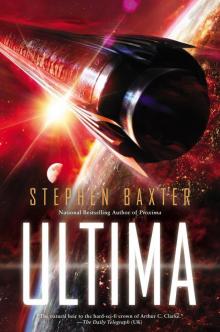 Ultima
Ultima Voyage n-1
Voyage n-1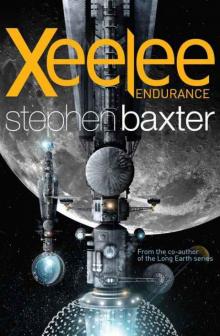 Xeelee: Endurance
Xeelee: Endurance Space m-2
Space m-2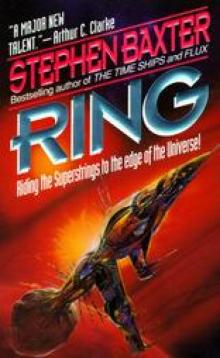 Ring xs-4
Ring xs-4 Raft
Raft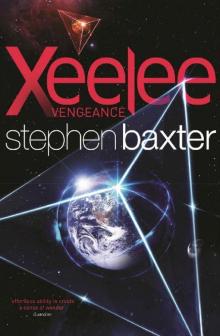 Xeelee: Vengeance
Xeelee: Vengeance Iron Winter n-3
Iron Winter n-3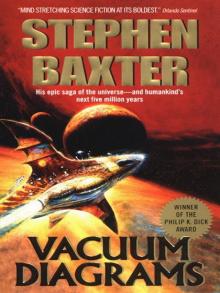 Vacuum Diagrams
Vacuum Diagrams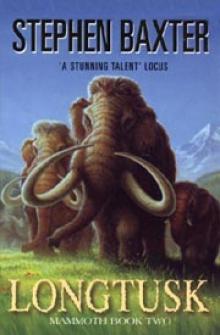 Longtusk tm-2
Longtusk tm-2 Proxima
Proxima Evolution
Evolution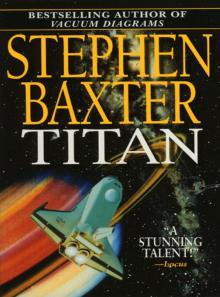 Titan
Titan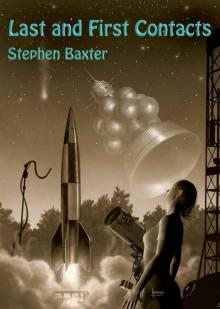 Last and First Contacts (Imaginings)
Last and First Contacts (Imaginings) Emperor
Emperor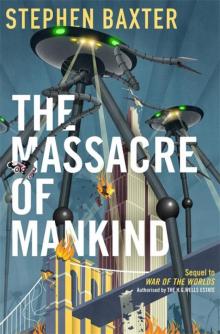 The Massacre of Mankind
The Massacre of Mankind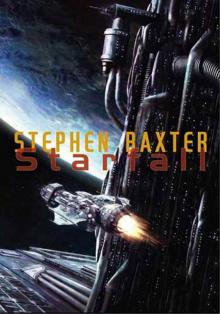 Starfall
Starfall Doctor Who - The Wheel of Ice
Doctor Who - The Wheel of Ice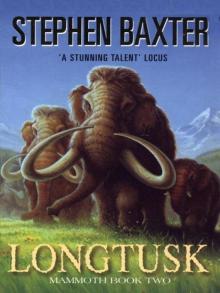 Longtusk
Longtusk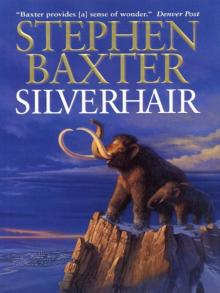 Silverhair
Silverhair Conqueror tt-2
Conqueror tt-2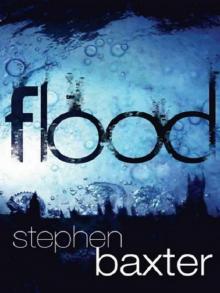 Flood
Flood Flood f-1
Flood f-1 Emperor tt-1
Emperor tt-1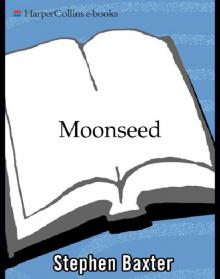 Moonseed
Moonseed Conqueror
Conqueror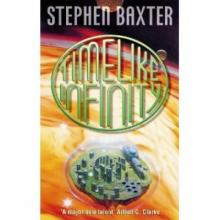 Timelike Infinity xs-2
Timelike Infinity xs-2 The Ghost Pit
The Ghost Pit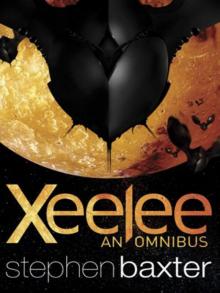 Xeelee: An Omnibus: Raft, Timelike Infinity, Flux, Ring
Xeelee: An Omnibus: Raft, Timelike Infinity, Flux, Ring Weaver tt-4
Weaver tt-4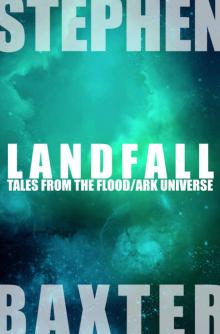 Landfall: Tales From the Flood/Ark Universe
Landfall: Tales From the Flood/Ark Universe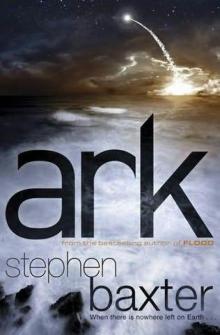 Ark
Ark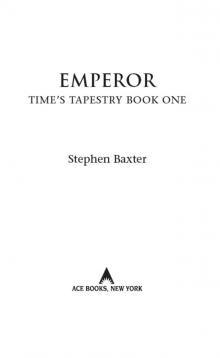 Emperor: Time’s Tapestry Book One
Emperor: Time’s Tapestry Book One Space
Space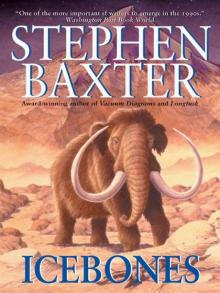 Icebones
Icebones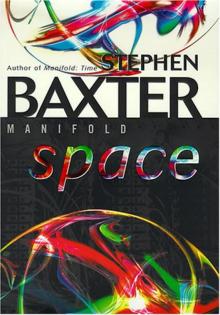 Manifold: Space
Manifold: Space Navigator
Navigator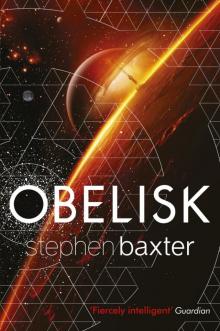 Obelisk
Obelisk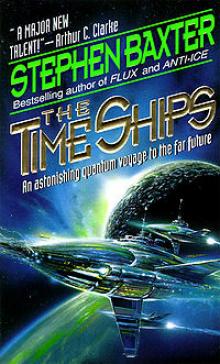 The Time Ships
The Time Ships Bronze Summer
Bronze Summer Resplendent
Resplendent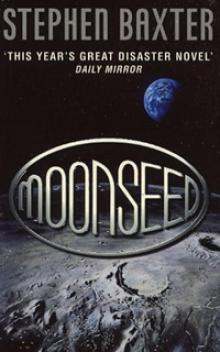 Moonseed n-3
Moonseed n-3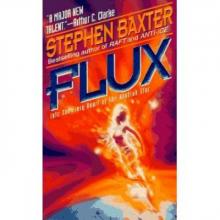 Flux xs-3
Flux xs-3 Transcendent dc-3
Transcendent dc-3 Icebones tm-3
Icebones tm-3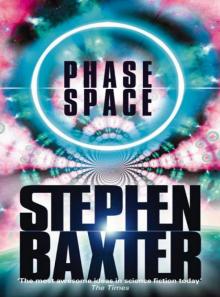 Phase Space
Phase Space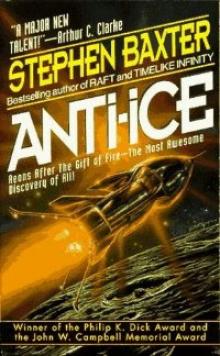 Anti-Ice
Anti-Ice Weaver
Weaver Voyage
Voyage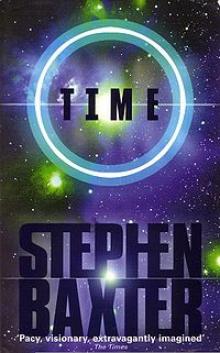 Time m-1
Time m-1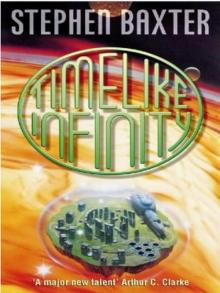 Timelike Infinity
Timelike Infinity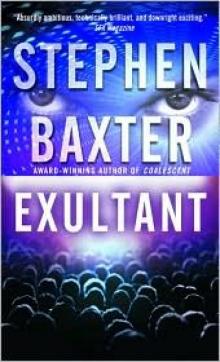 Exultant dc-2
Exultant dc-2 Coalescent dc-1
Coalescent dc-1 Navigator tt-3
Navigator tt-3